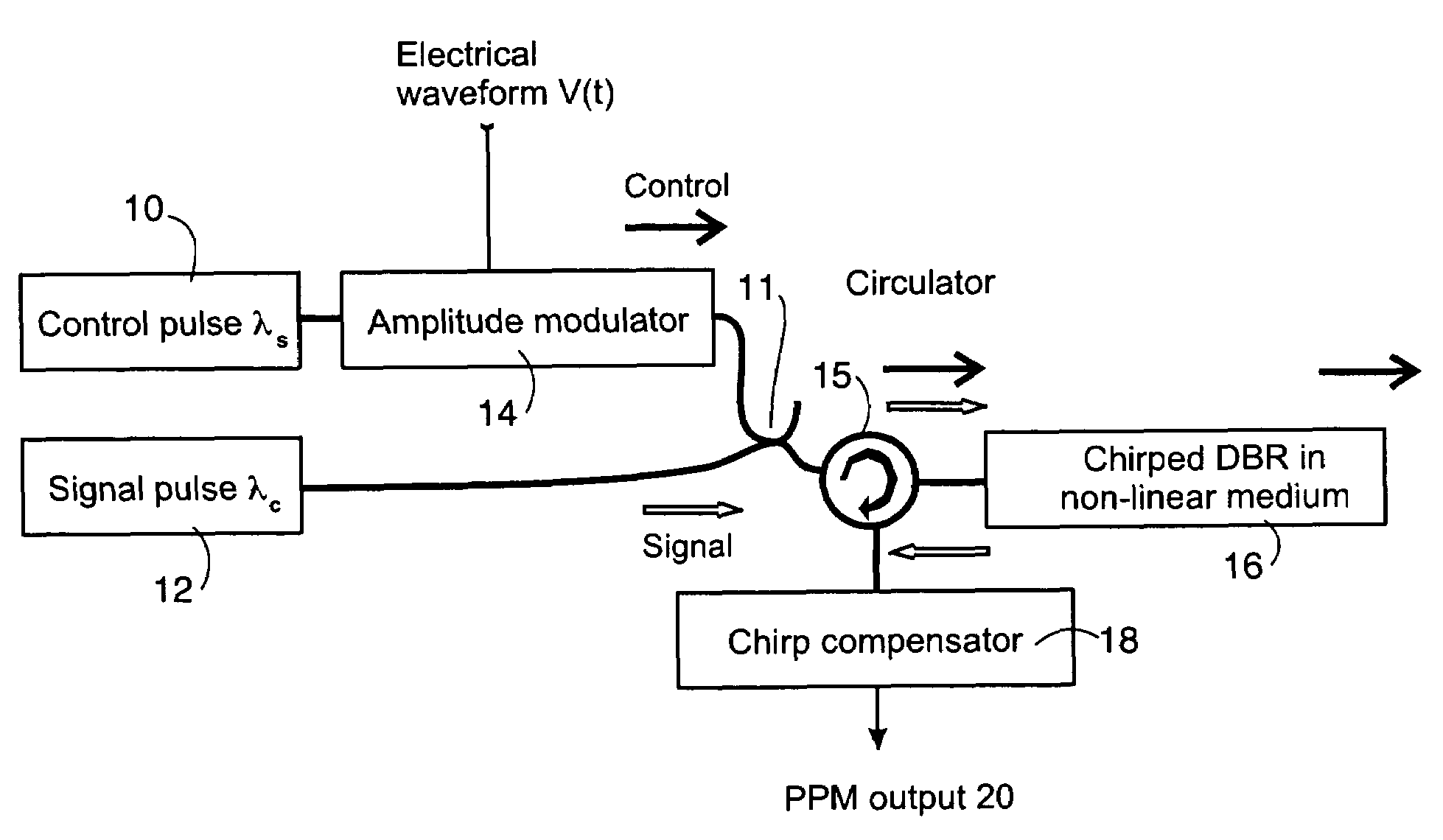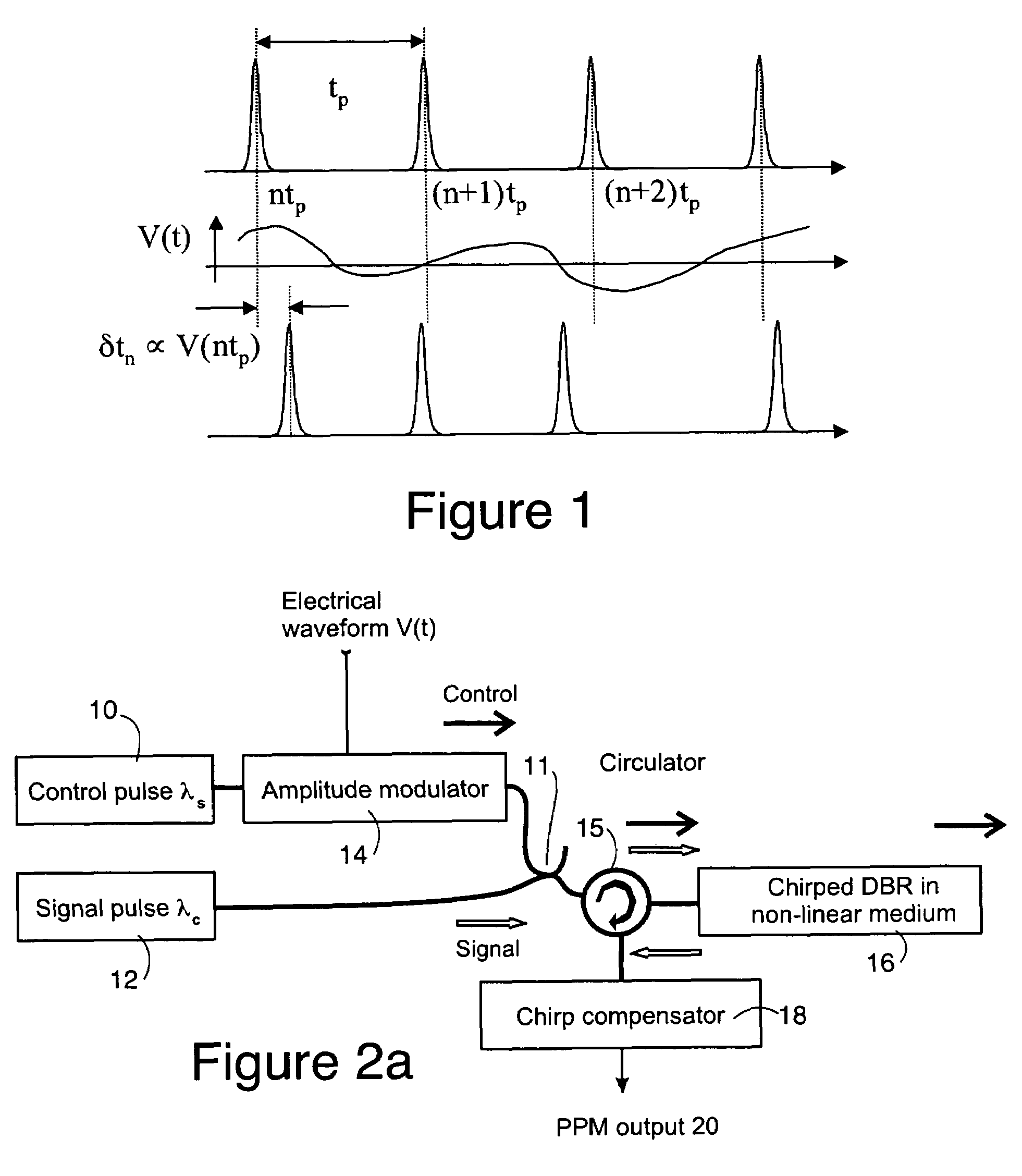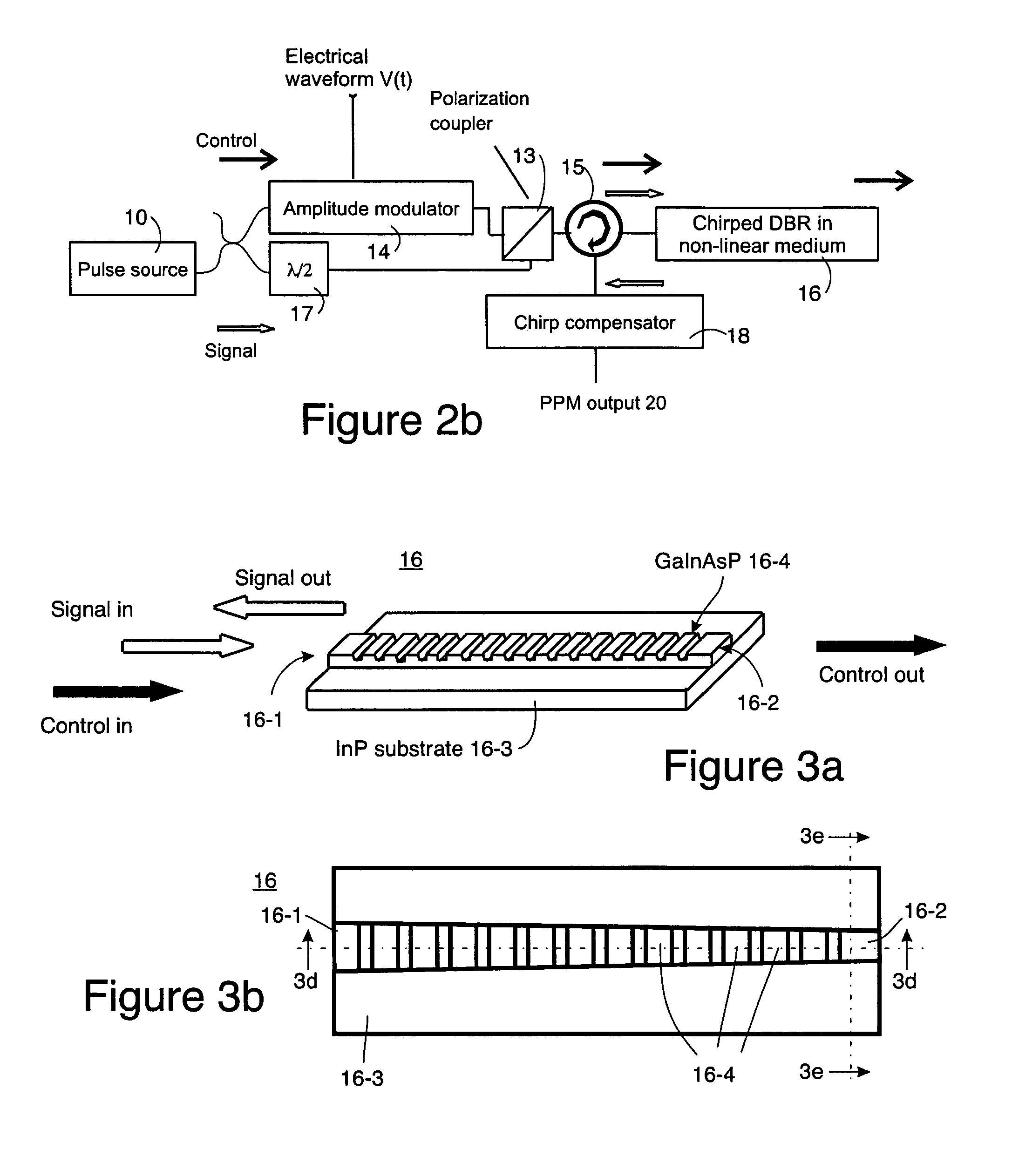All-optical delay generator for PPM communication systems based on a non-linear waveguide with a chirped DBR
a delay generator and non-linear waveguide technology, applied in electromagnetic transmission, electrical equipment, transmission, etc., can solve the problems of poor signal to noise ratio (snr), delay generators, however, suffer from non-linearity at high frequencies, and improve the design of delay generators. problems such as complicated problems
- Summary
- Abstract
- Description
- Claims
- Application Information
AI Technical Summary
Problems solved by technology
Method used
Image
Examples
Embodiment Construction
[0023]A block diagram of one embodiment of an all-optical PPM modulator is shown in FIG. 2a while another embodiment is shown by FIG. 2b. In the embodiment of FIG. 2a, equally-spaced signal and control optical pulses are generated by mode locked lasers 10 and 12. Suitable lasers for this application are manufactured by Pritel Inc. The lasers 10 and 12 produce synchronized outputs at slightly different optical wavelengths λs and λc, respectively. The amplitude of the control pulses is modulated in an EO modulator 14 (preferably a Mach-Zender LiNbO3 modulator) in proportion to an electrical waveform V(t), which is to be transmitted as PPM pulses 20. The control and signal pulses are combined in a sampler 11 and launched into a non-linear waveguide with a chirped distributed Bragg reflector (DBR) 16. The relative path length of the control and signal pulses is chosen to achieve temporal overlap of the two pulses in the waveguide 16.
[0024]Alternatively, in the embodiment of FIG. 2b the ...
PUM
 Login to View More
Login to View More Abstract
Description
Claims
Application Information
 Login to View More
Login to View More - R&D
- Intellectual Property
- Life Sciences
- Materials
- Tech Scout
- Unparalleled Data Quality
- Higher Quality Content
- 60% Fewer Hallucinations
Browse by: Latest US Patents, China's latest patents, Technical Efficacy Thesaurus, Application Domain, Technology Topic, Popular Technical Reports.
© 2025 PatSnap. All rights reserved.Legal|Privacy policy|Modern Slavery Act Transparency Statement|Sitemap|About US| Contact US: help@patsnap.com



